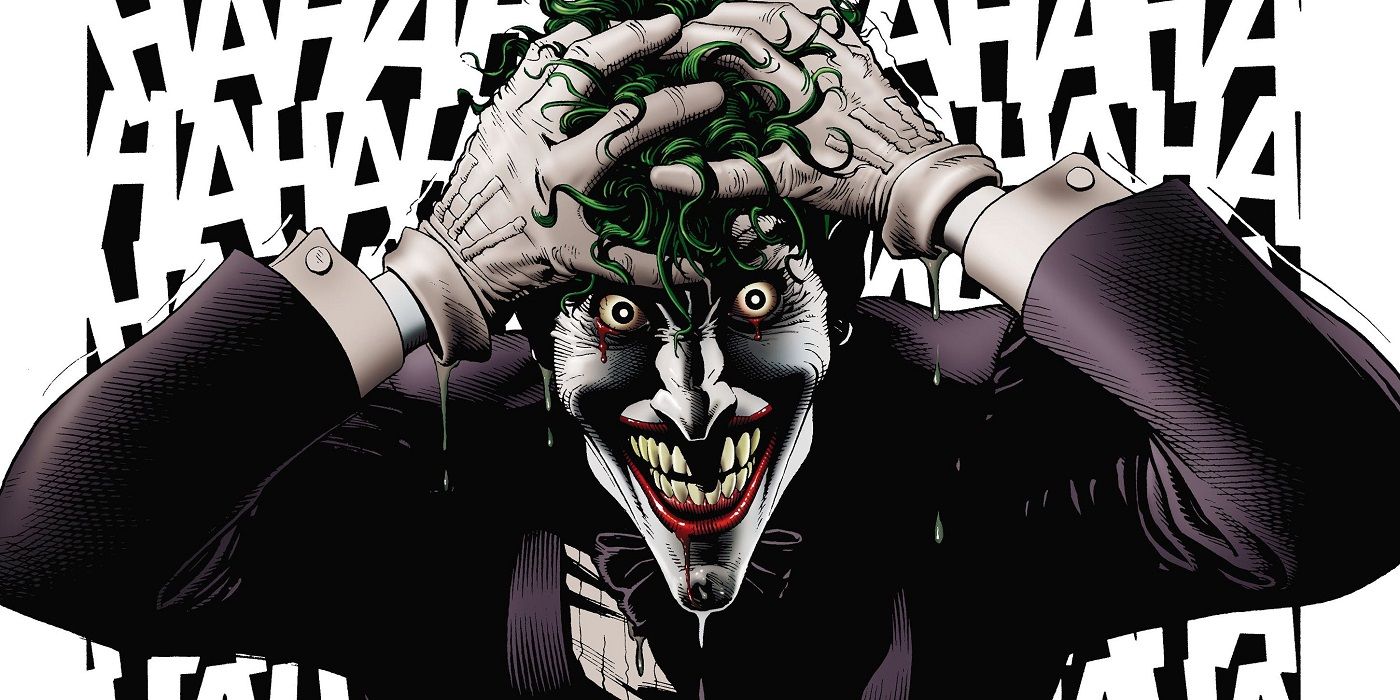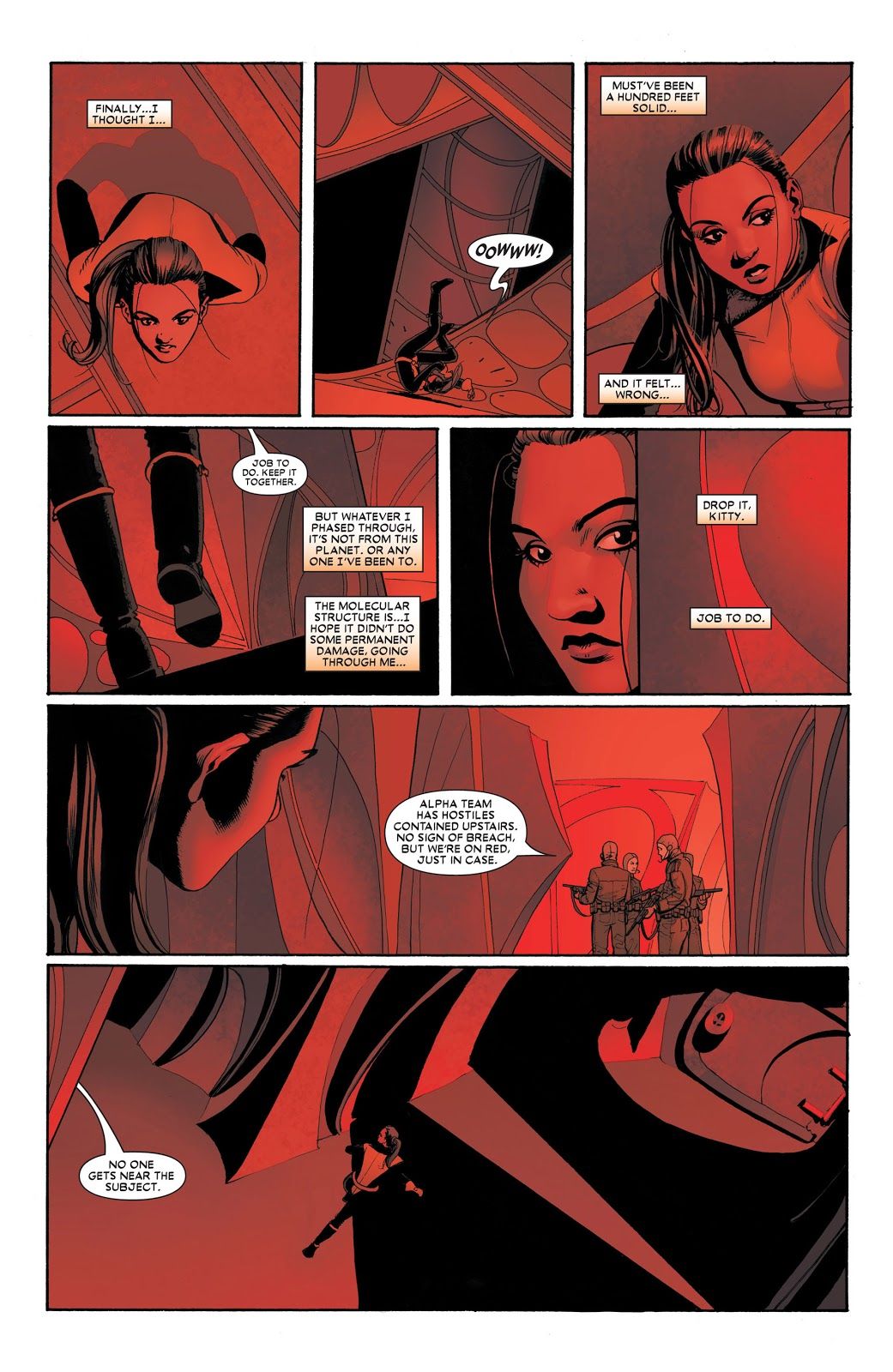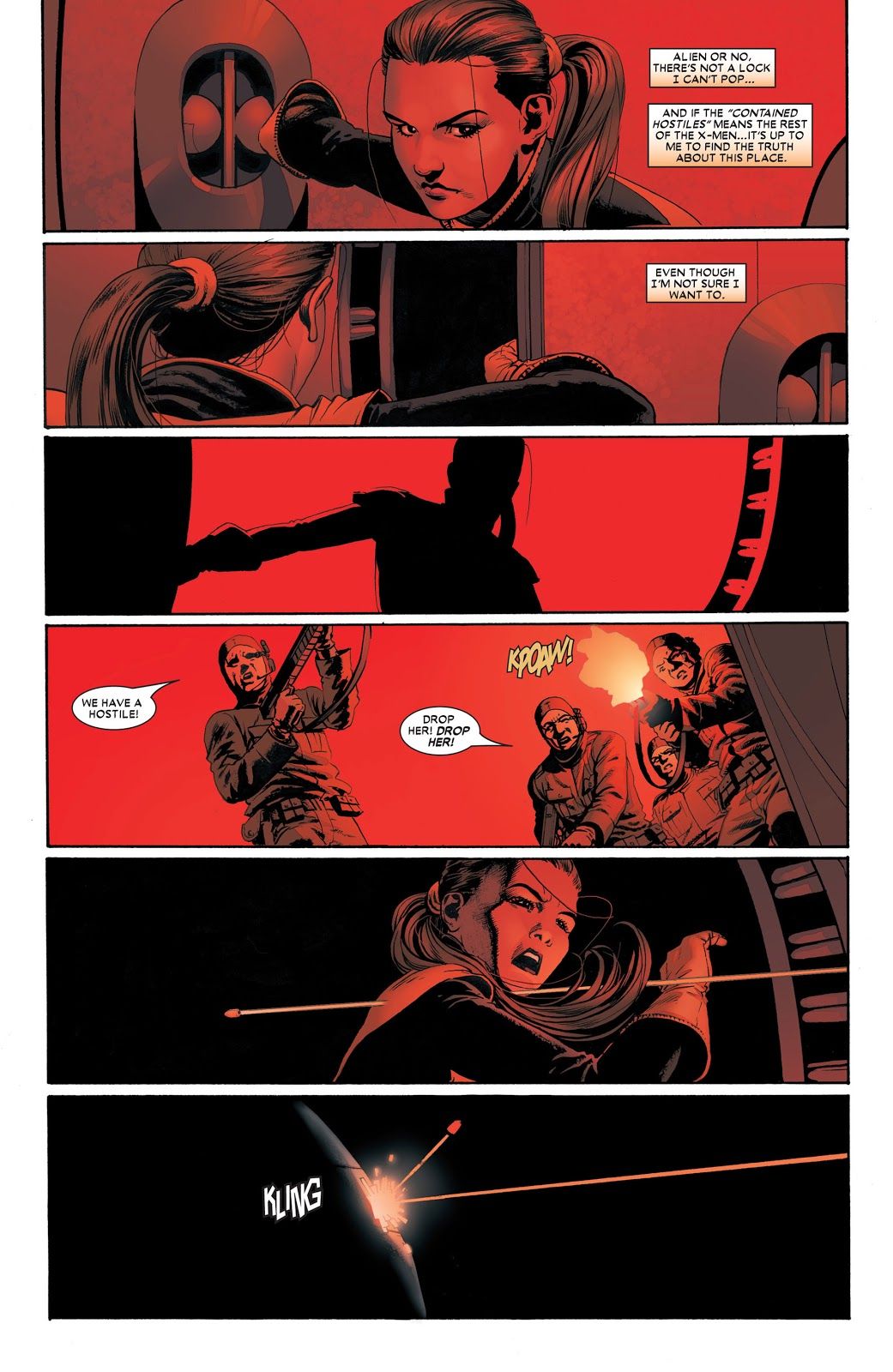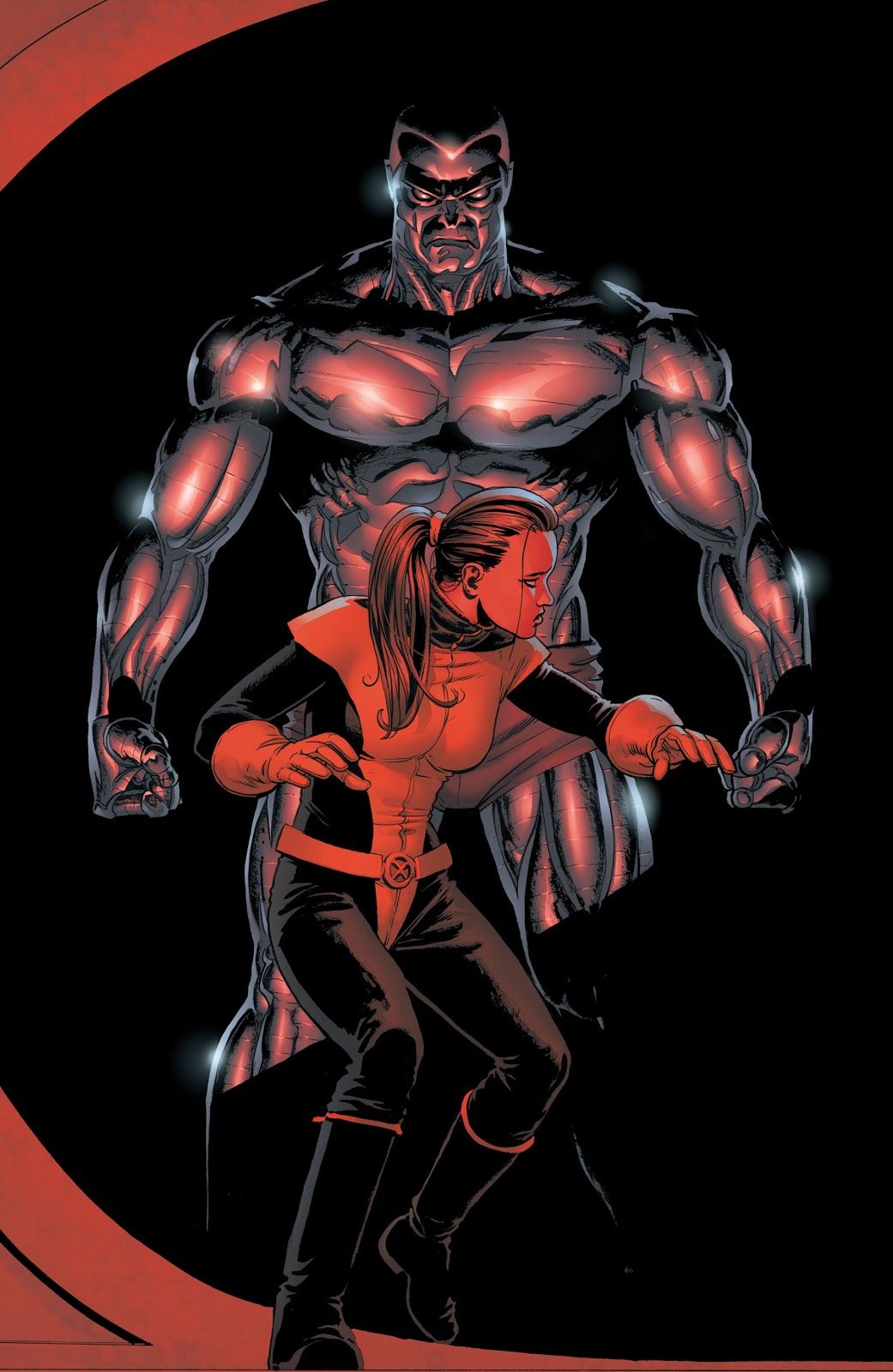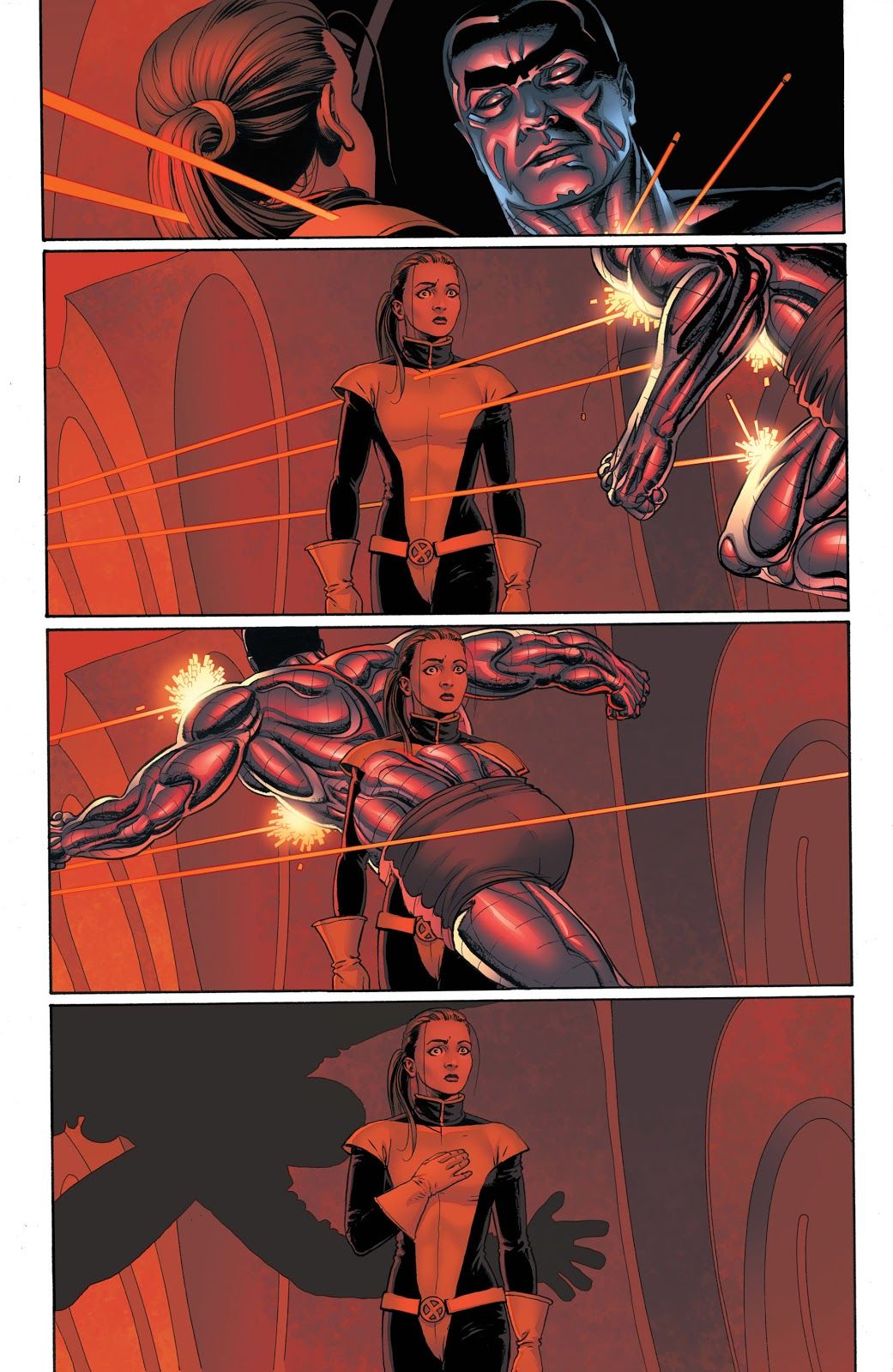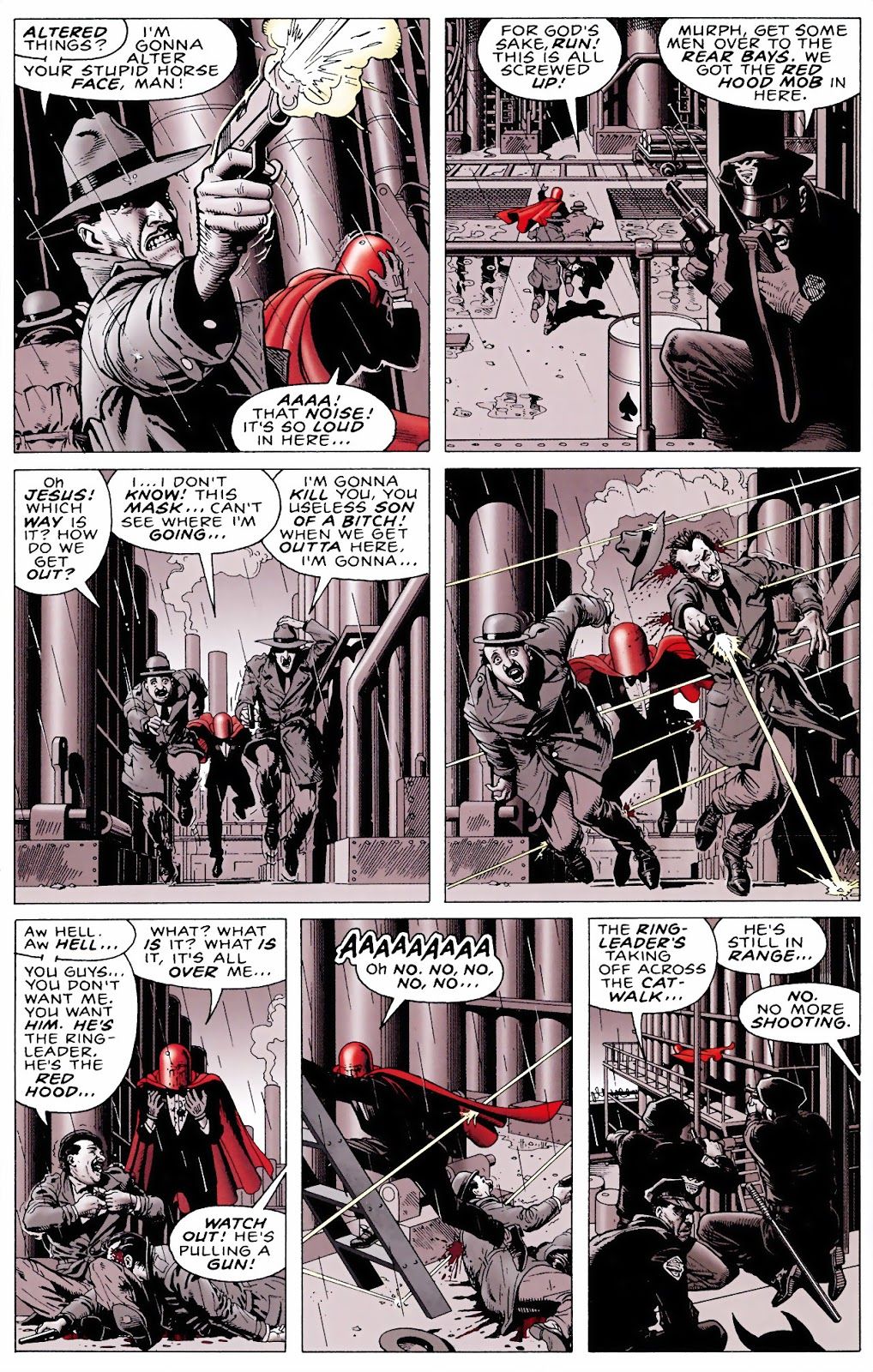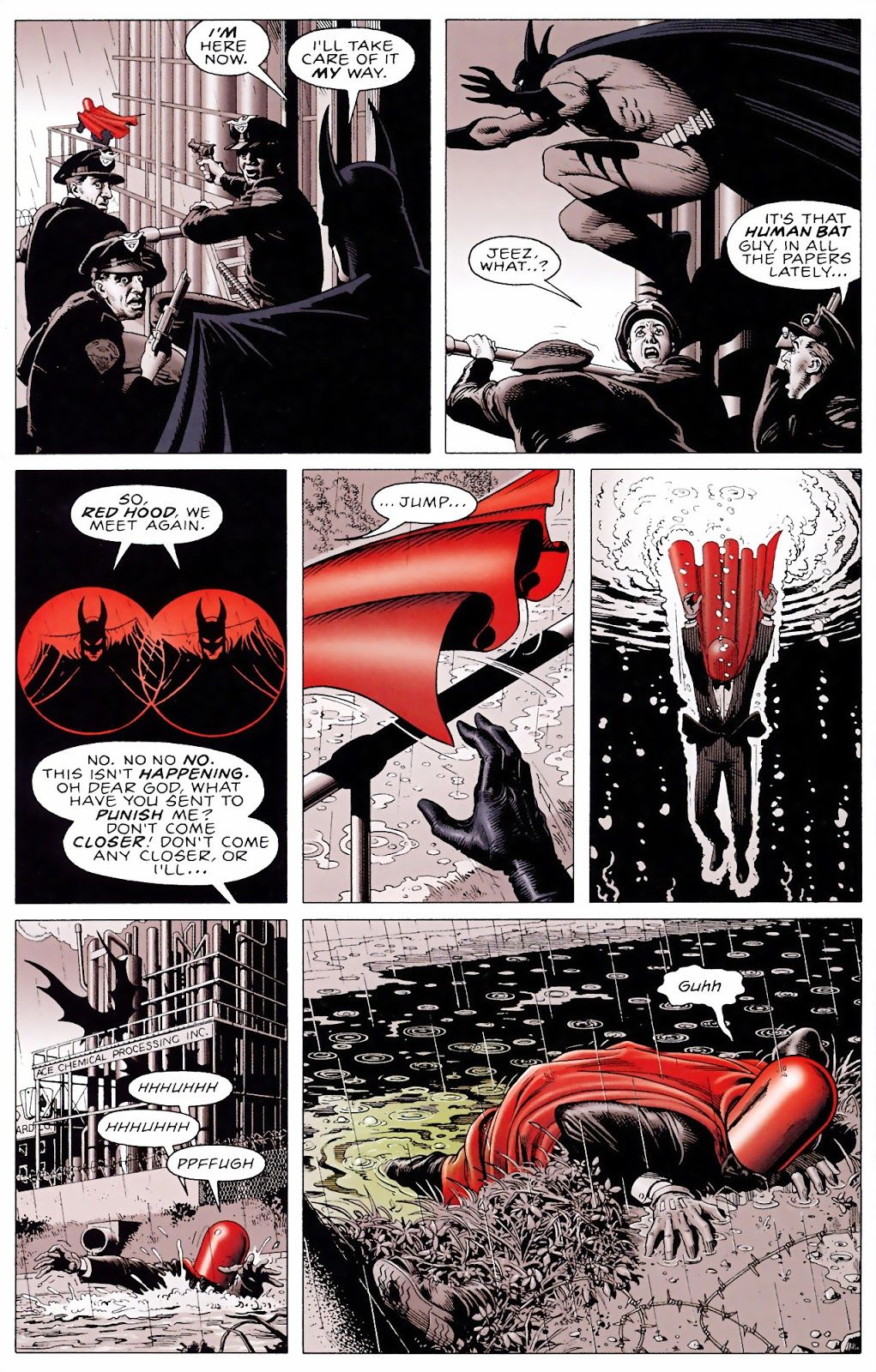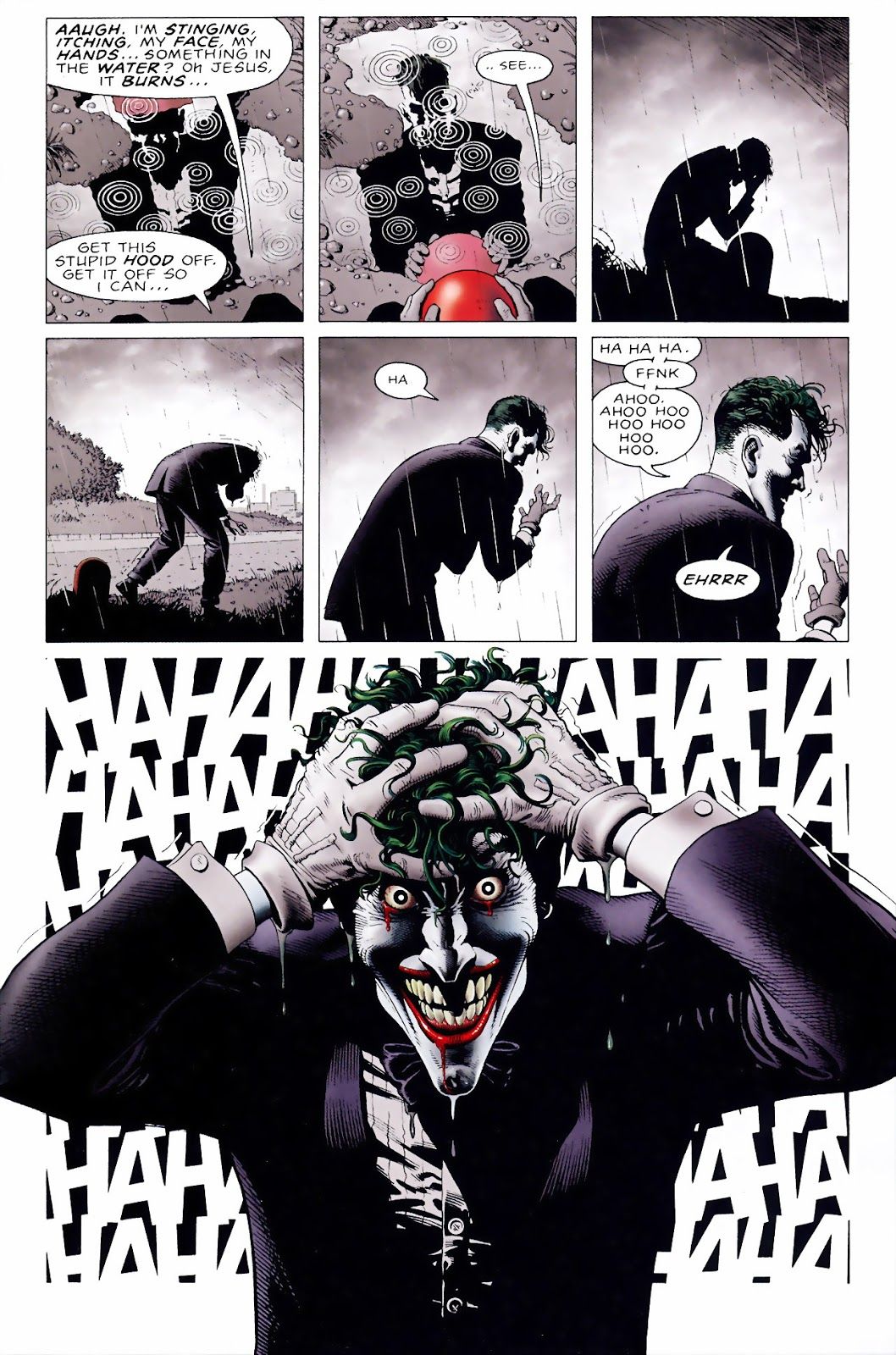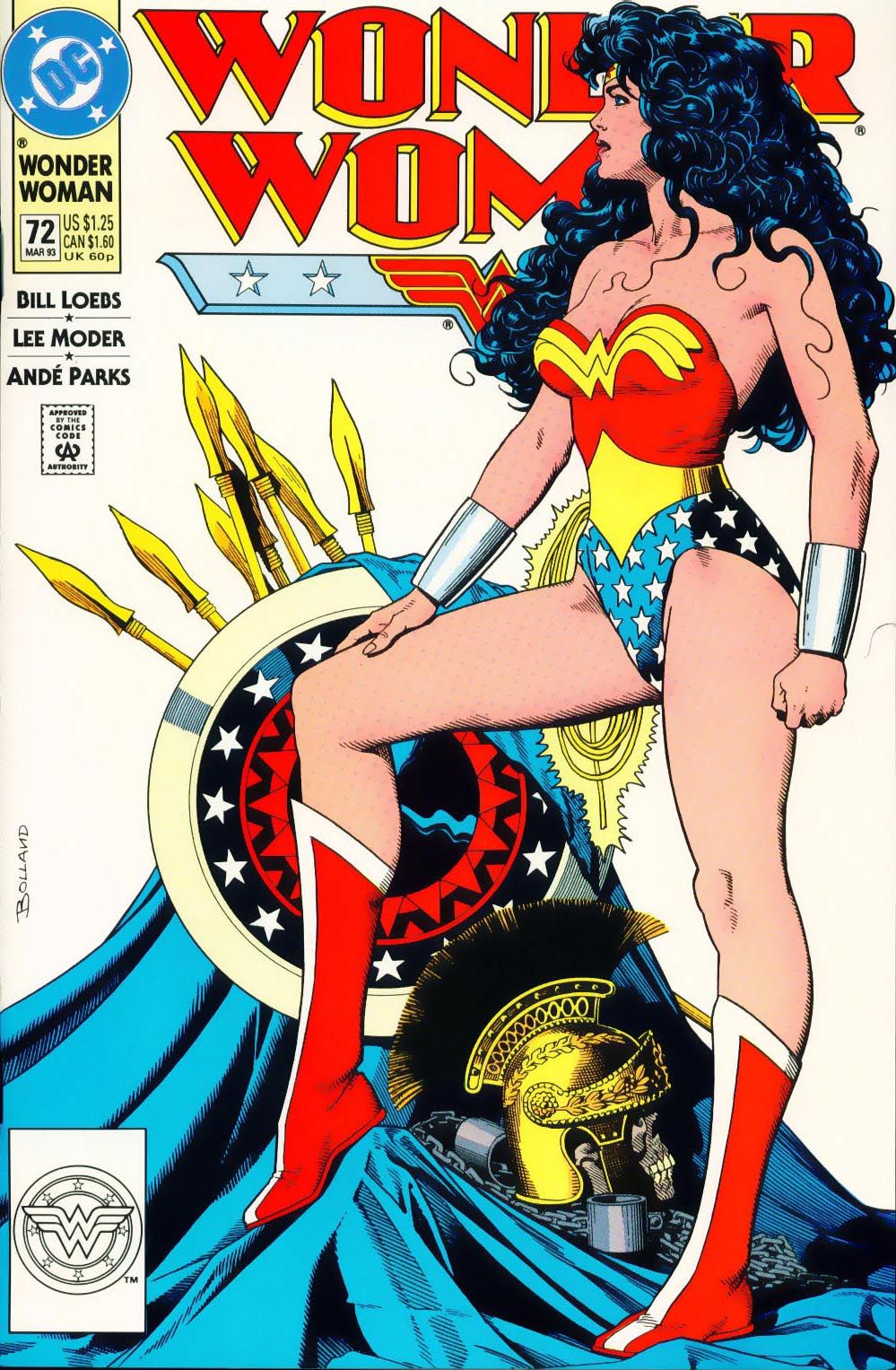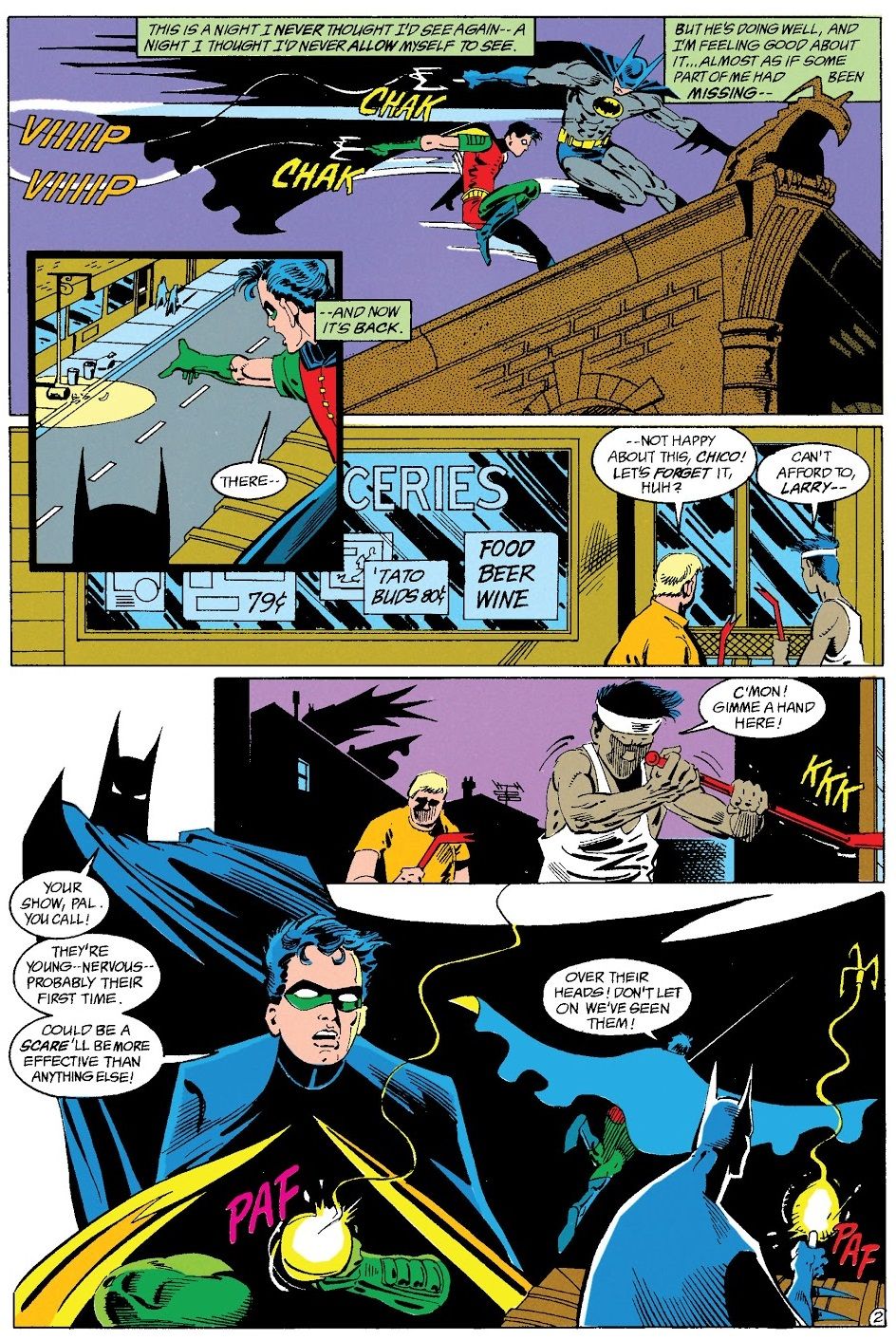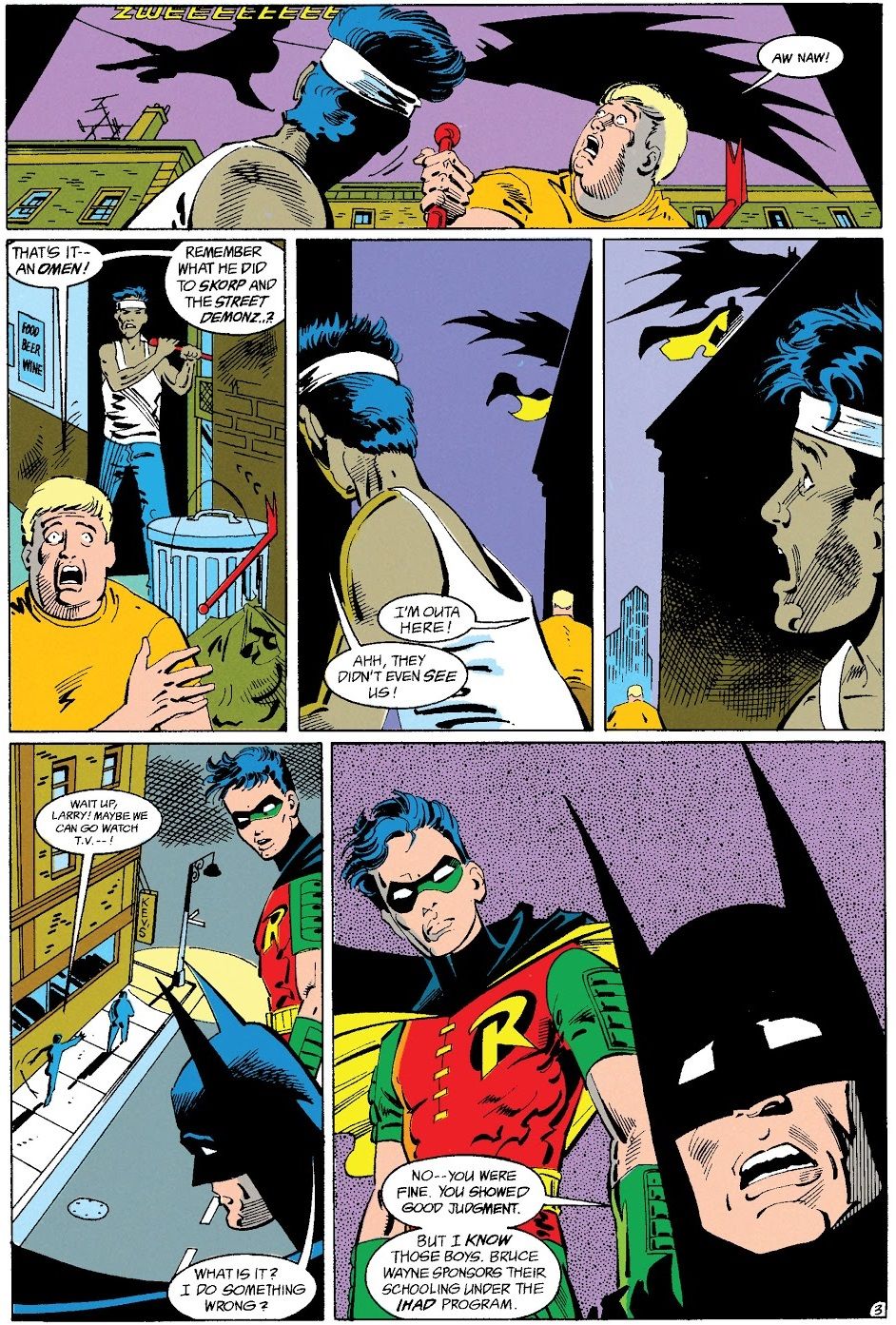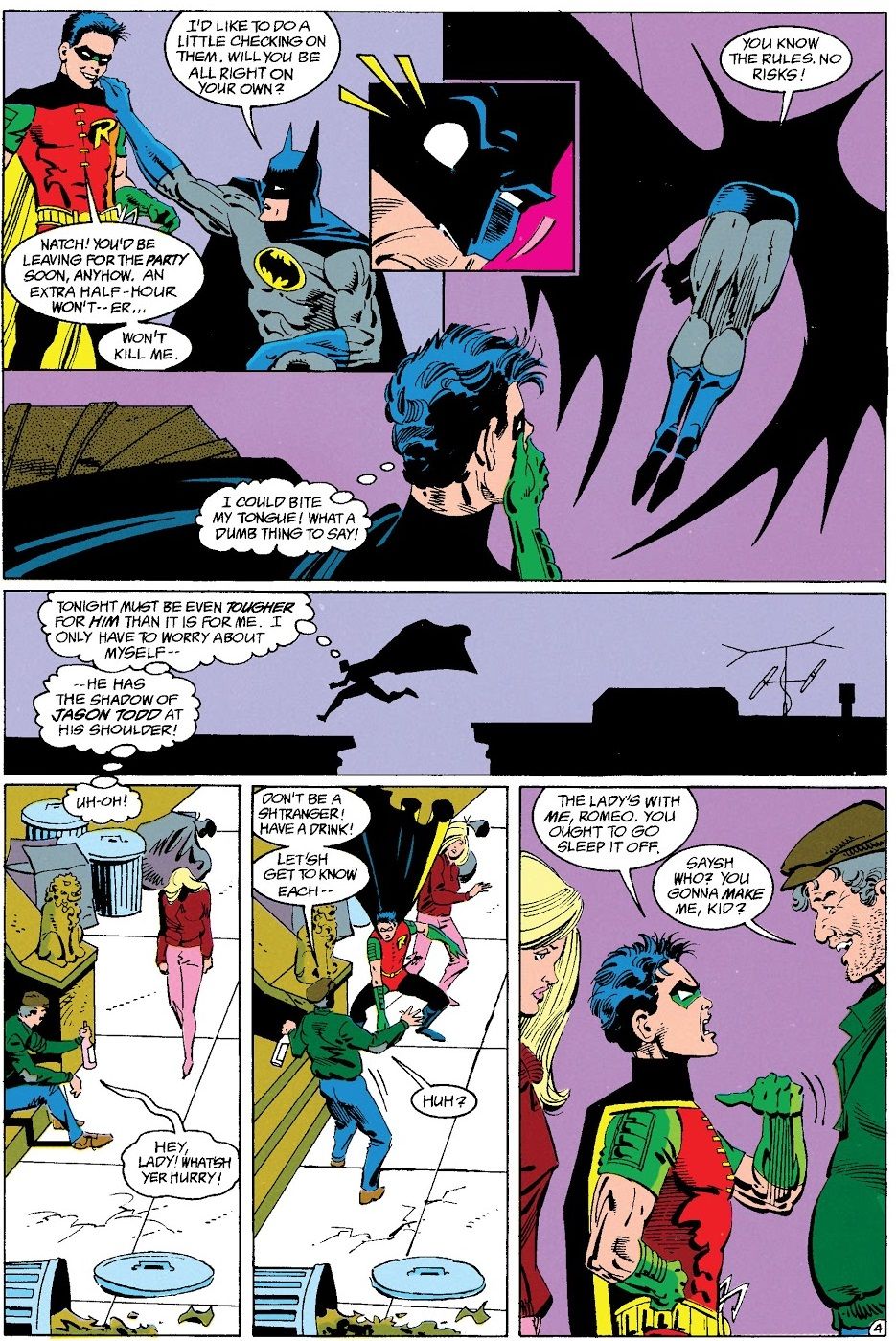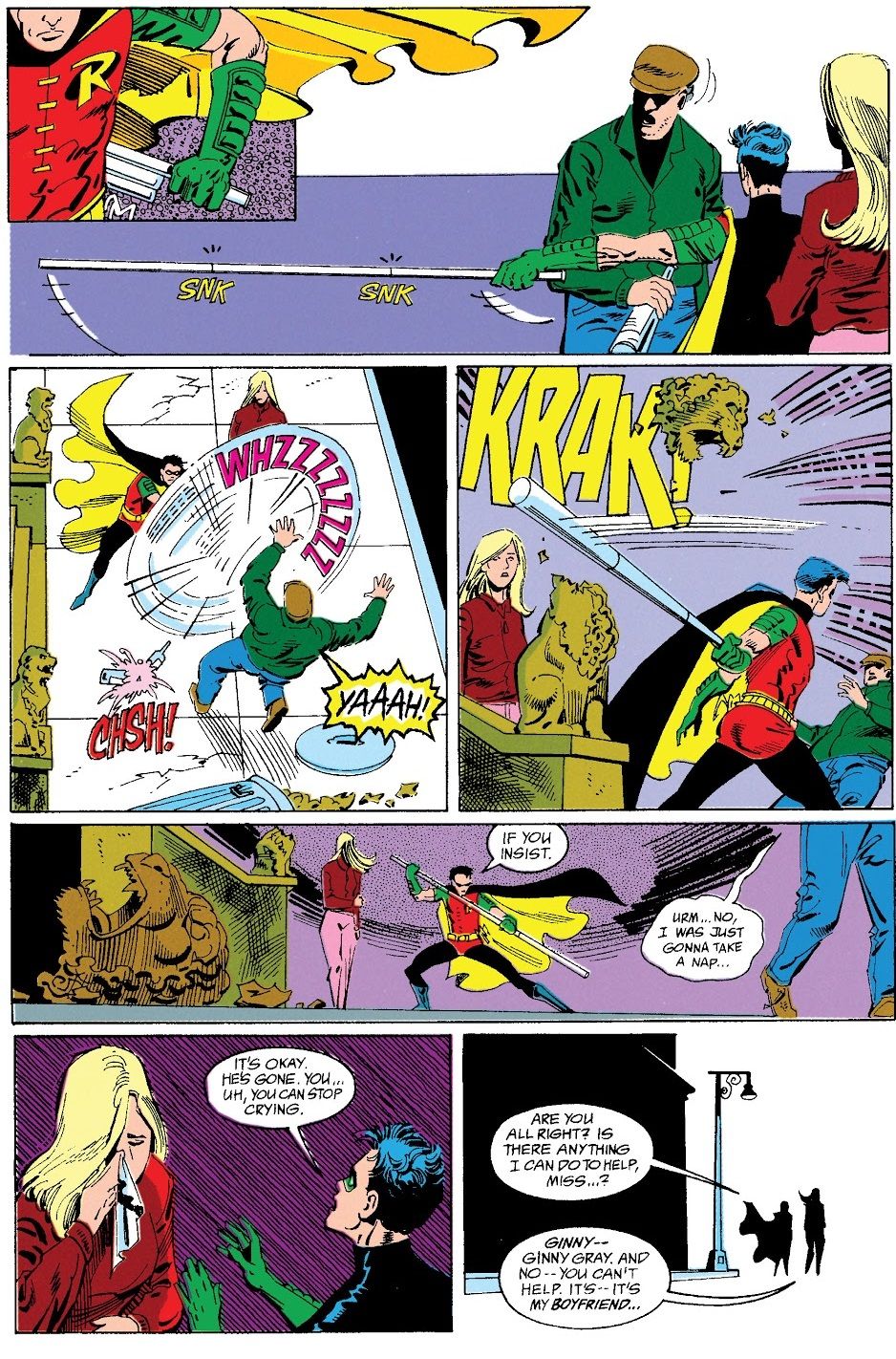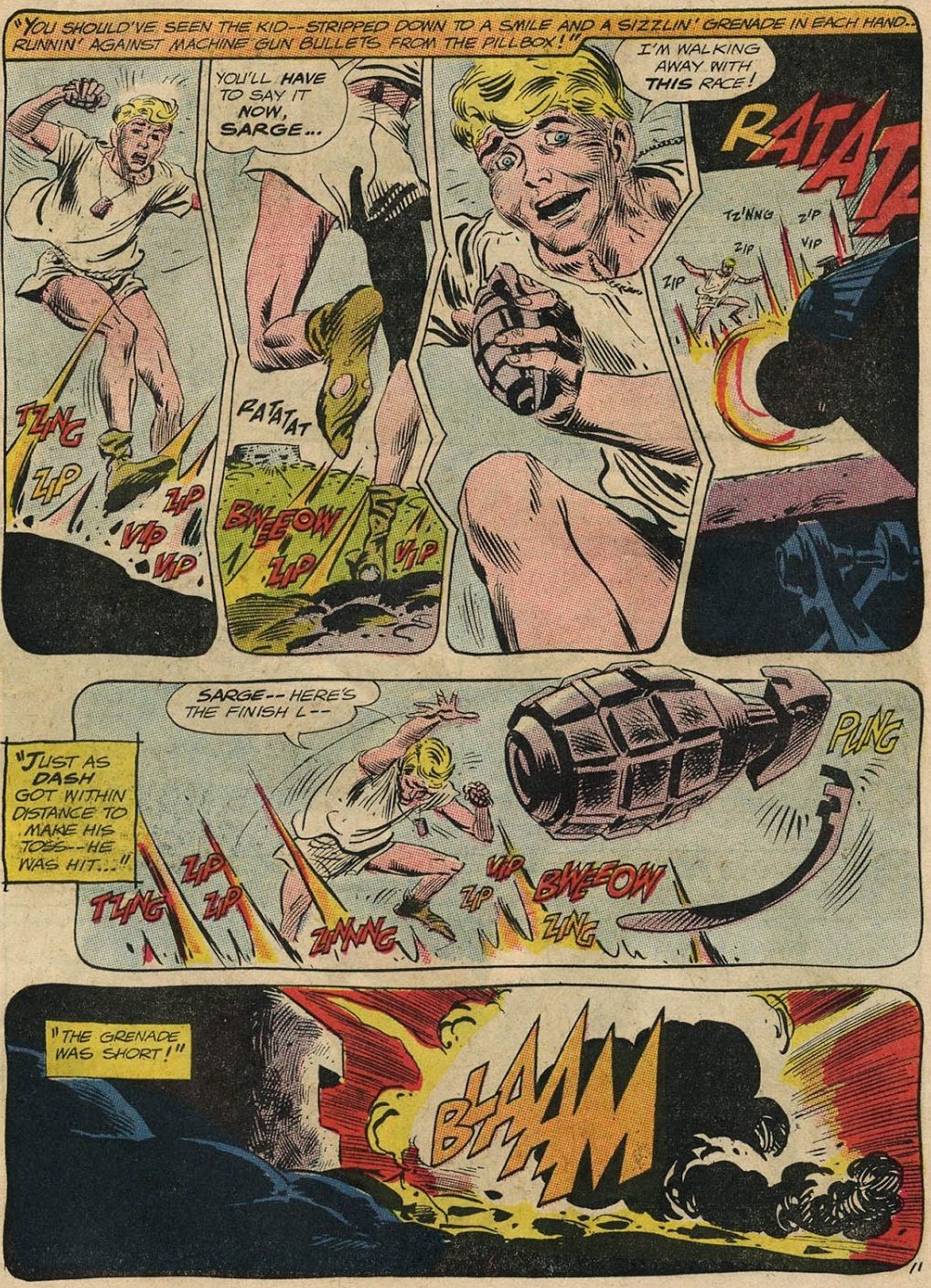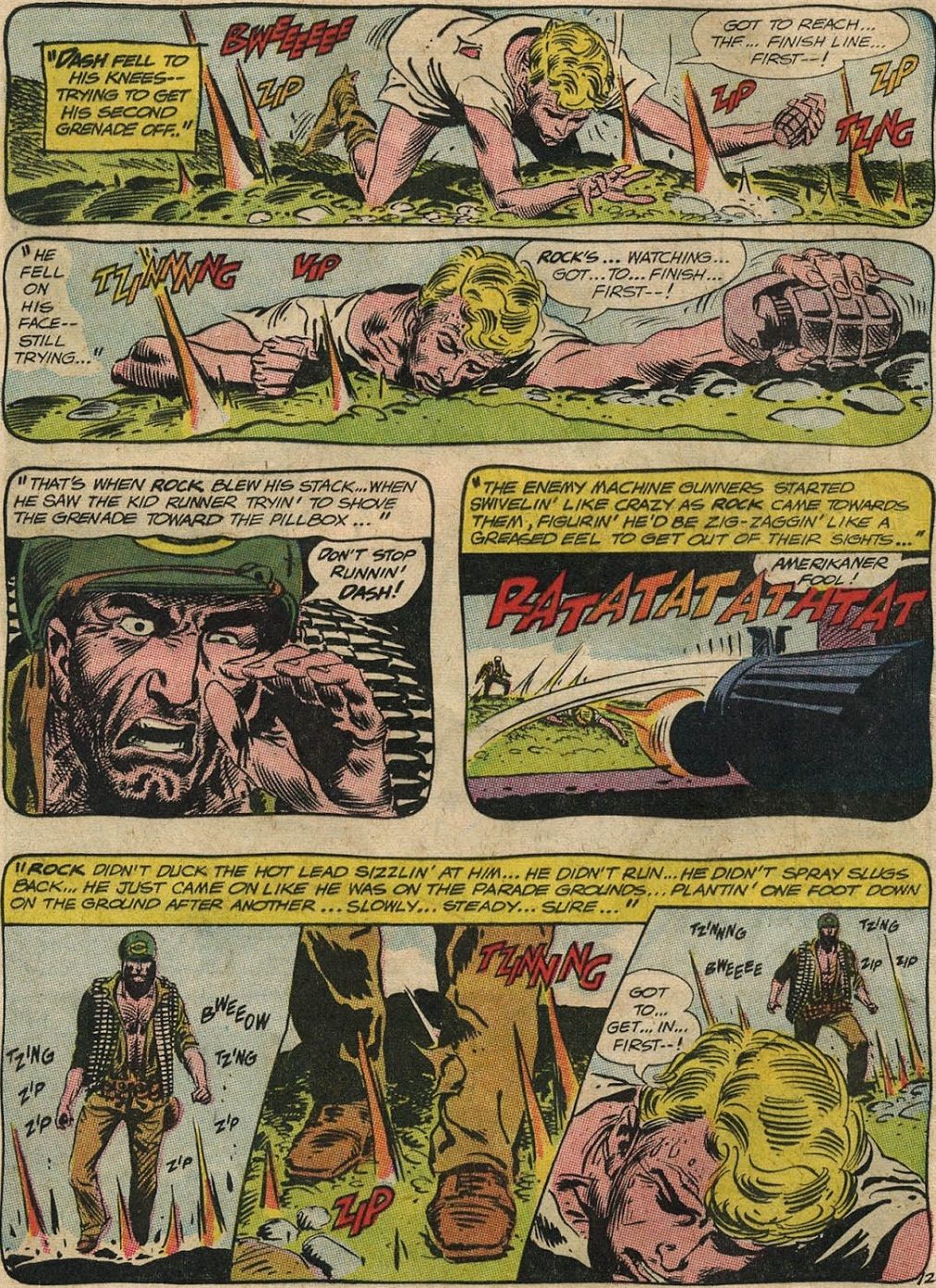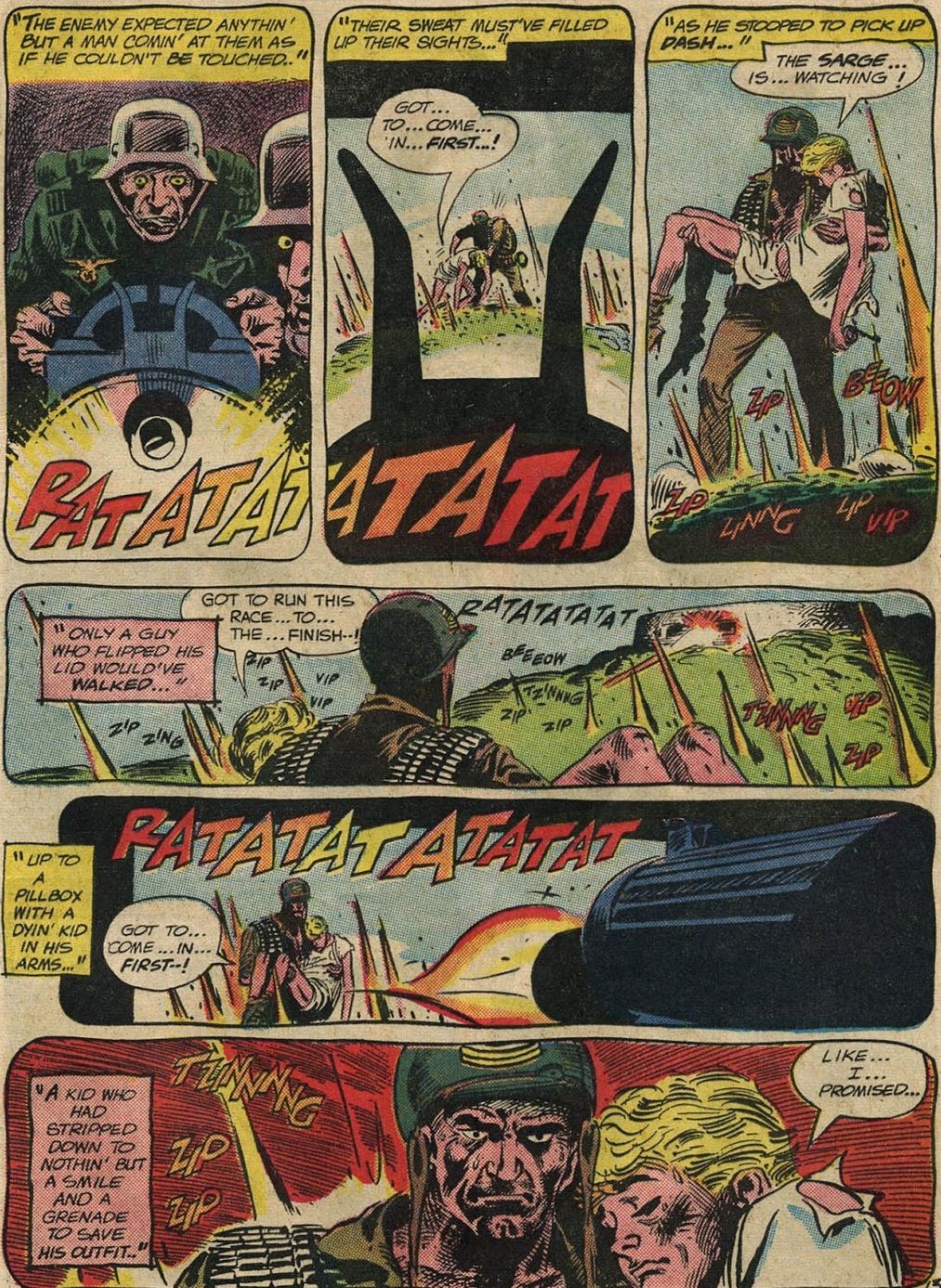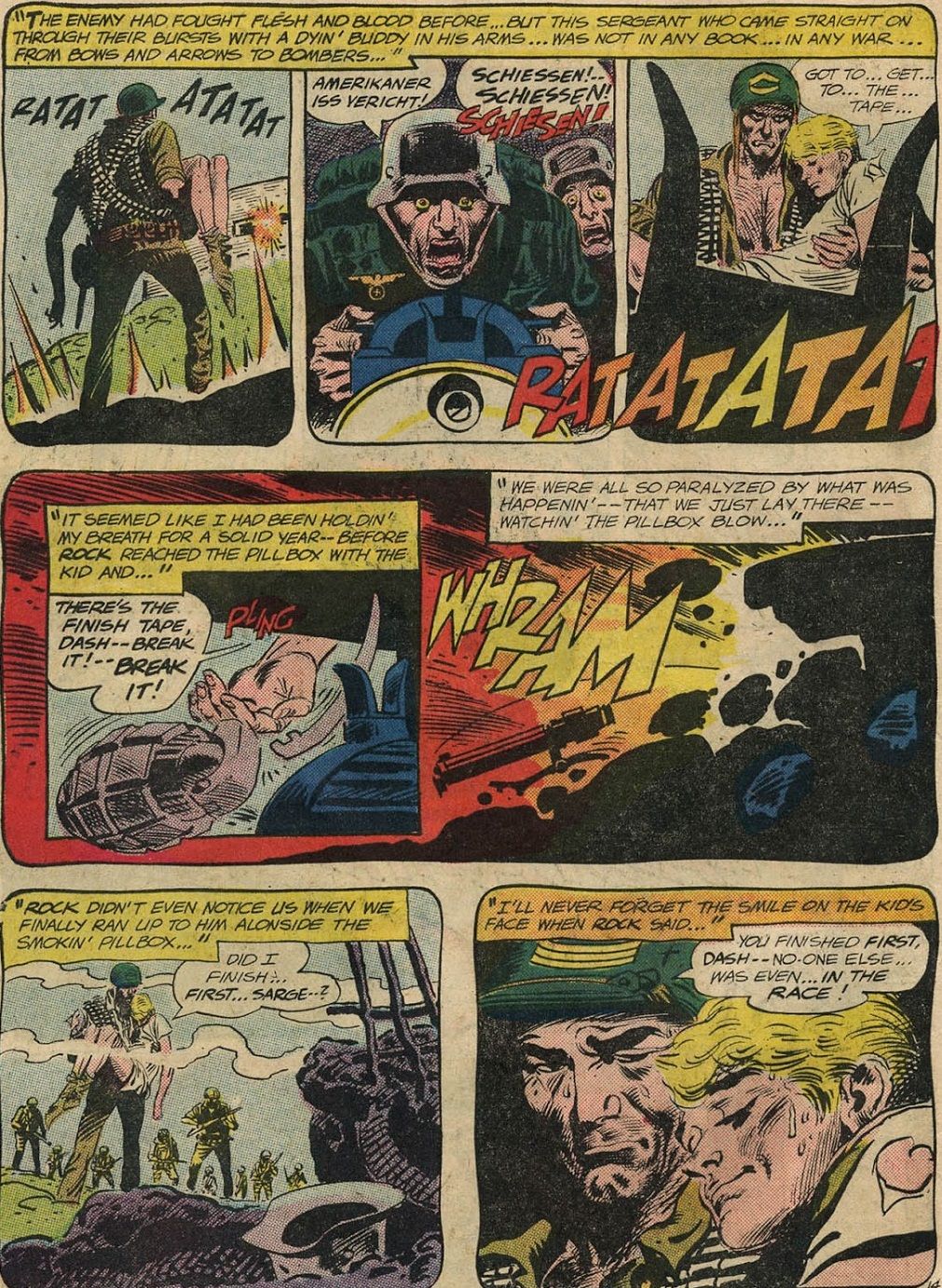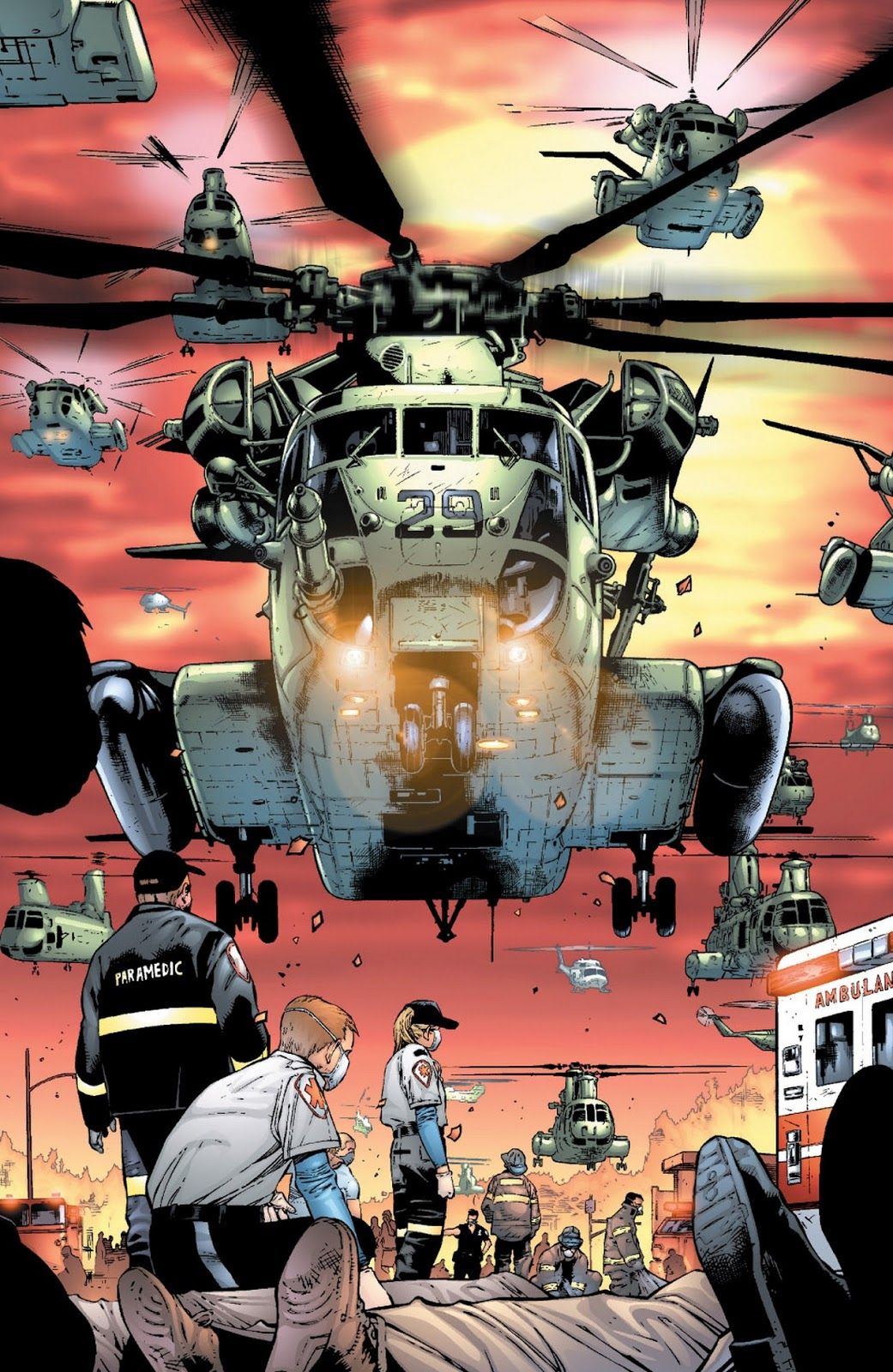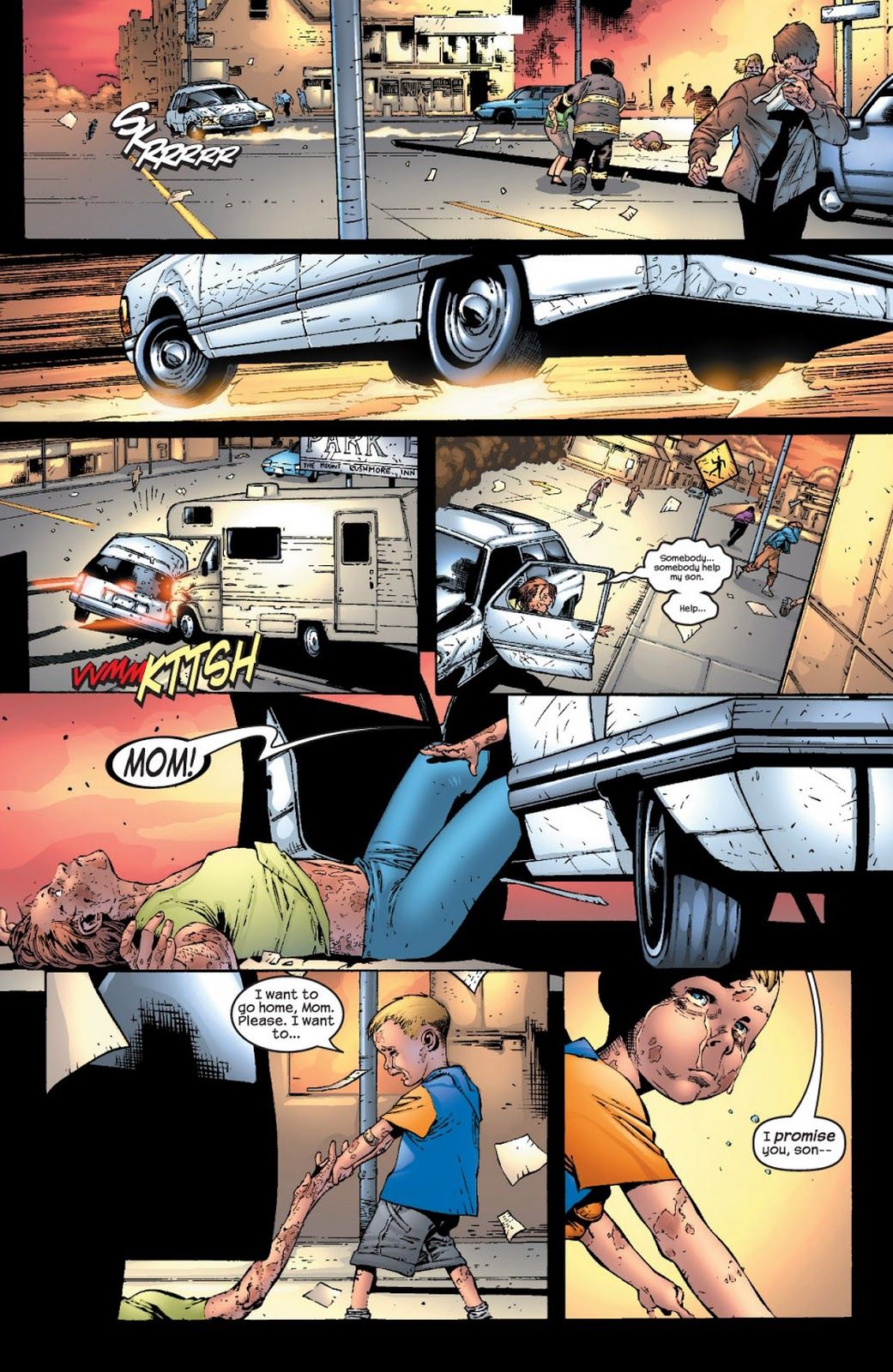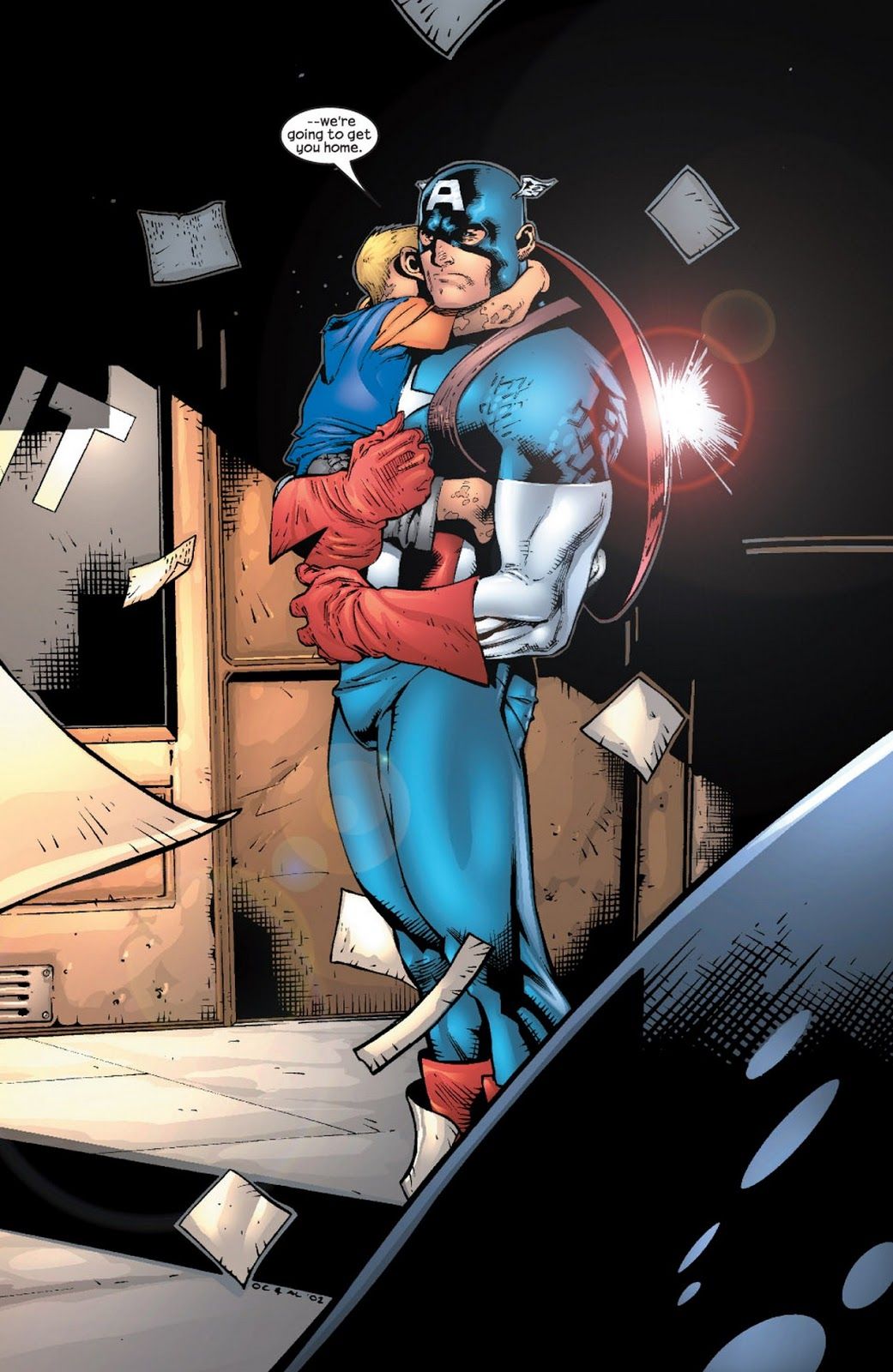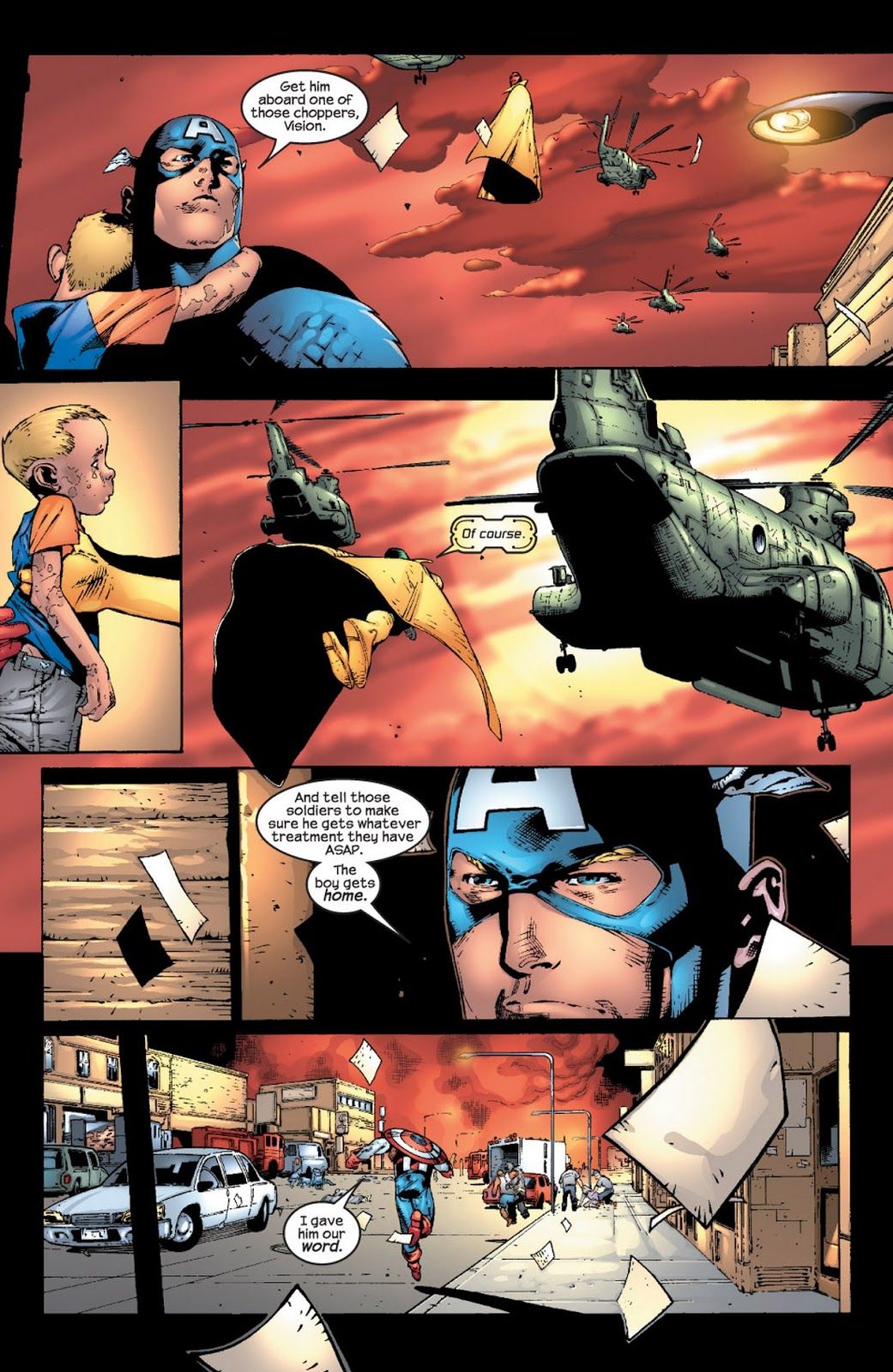The countdown continues!
Here are the next five artists that you voted as your favorites of all-time (out of roughly 1,008 ballots cast, with 10 points for first place votes, 9 points for second place votes, etc.).
40. John Cassaday - 252 points (6 first place votes)
John Cassaday lays out his pages extremely well, and it is no surprise that his work is so popular, as people tend to go for that quasi-realistic approach in a big way, and Cassaday has all of that while never sacrificing clarity. Here is his famous handling of the revelation that Colossus was not actually dead...
It practically gives me chills!
39. Brian Bolland - 261 points (3 first place votes)
Since Brian Bolland's stunning work is shocking to us NOW, can you even imagine how great it looked to comic fans of the 1980s, where Bolland first broke on to the American comic book scene after starring over in England? Bolland did a maxi-series about Camelot 3000 and a short story in Justice League of America #200, but fans perhaps know him best for The Killing Joke, a sort of origin for the Joker...
Since then, his contributions to comic books have mostly been stunning comic book covers rather than interior pages.
He still clearly makes his mark with his covers.
37 (tie). Norm Breyfogle - 266 points (2 first place votes)
Norm Breyfogle's career was an interesting mixture of good timing and not-so-good timing. After working in independent comic books for a few years, Breyfogle finally got a chance to do a regular book for DC Comics when he took over art duties on Detective Comics in 1988 when that book was in a major sales slump. Alan Grant and John Warner joined the series as the writers and sales were so low that Warner jumped ship early into their shared run (but let Grant still use his name since Grant was afraid they wouldn't want just him, plus, in their "split," Wagner was given Judge Dredd to write). Then a funny thing happened - the Batman movie came out in 1989 and suddenly Batman sales were skyrocketing. However, Grant and Breyfogle were then taken off of Detective Comics temporarily for #600 so that the screenwriter of the Batman movie could write it instead. Later, Grant and Breyfogle were promoted to the main Batman series, where they introduced the new Robin, Tim Drake, into the series (Neal Adams designed Robin's costume, but Breyfogle was the first artist to draw it in the comics).
Here, from Tim's first night on the job, we see many of Breyfogle's greatest skills - his dynamic artwork and his strong character expressions...
Plus, of course, the bat-grappling hook, which Breyfogle first drew in the comics (although they showed up in the Batman movie first). Breyfogle and Grant were then given their own Batman spin-off, which helped to make up for the lost royalties from missing Detective Comics #600. However, because of that, they missed out on drawing Batman #493 (the breaking of Batman's back) and Batman #500 (the introduction of the new Batman, Jean-Paul Valley). Then, some good timing, the mainstream comic book market was so bit that Breyfogle was offered a crazy amount of money to help launch Prime for the Ultraverse at Malibu. However, some bad timing, the Ultraverse (and the comic book market as a whole) collapsed a bit soon after launching.
Still, Breyfogle kept drawing comic books for decades before he sadly suffered a stroke in 2014. He had recovered greatly from the stroke, but could no longer draw professional and sadly complications from the stroke eventually were too much and he passed away earlier this year.
Page 2: [valnet-url-page page=2 paginated=0 text='See the other artist tied for #37 and then the #36 artist!']
37 (tie). Joe Kubert - 266 points (5 first place votes)
Very few artists could ever claim to be regular working artists in the Golden Age of comics and still working as a regular comic book artist after 2010, but Joe Kubert is one of those people. He remained an acclaimed artist all the way until he passed away, still working on new comic books for DC Comics.
While Kubert was an excellent superhero artist and if you asked him, he'd probably say he preferred drawing stuff like Tarzan or his caveman character Tor best of all, he is most known for his work on DC's war comics. He was so good at it that they up and GAVE him the books to run eventually.
His most famous character that he worked on was definitely Sgt. Rock. Here is a bit from one of the most famous Rock stories of all-time, "The Four Faces of Sgt. Rock" from Our Army at War #127 (written by Kanigher). It was one of those stories where different people tell stories about Rock from different perspectives. Here's one about how Rock kept getting on a new recruit who kept lagging behind the others. He kept dealing Rock that he really was fast, but he was just loaded down by all his gear. Rock didn't acknowledge it and it drove the kid sort of nuts, to the point where during one battle, he decides to show how fast he really was...
Powerful artwork.
36. Olivier Coipel – 272 points
Olivier Coipel sprang on to the scene with an out of the box approach to the Legion of Super-Heroes during Dan Abnett and Andy Lanning's run on the Legion. It was a real shock to go from the Jeffrey Moy, Scott Kolins, Lee Moder and Jason Armstrong art style on the previous Legion run to the edgier Coipel work. Early Coipel was particularly sketchy around the edges, but bursting with an energy that you rarely get to see in mainstream comic books. It was clear that Coipel was a burgeoning superstar artists, so DC first relaunched the Legion with Legion Lost, specifically to spotlight Coipel's artwork, but then Marvel swooped in and recruited Coipel away. By this time, Coipel had smoothed his edges to become a bit more of a traditional-looking superhero artist, while maintaining the kinetic energy that had been his trademark when he started out.
His first Marvel work was a stint on Avengers with Geoff Johns where he quickly showed how powerful his work can be. The concept is that a deadly virus has been released in Mount Rushmore and the Avengers show up with the United States military...
One husband and wife valiantly try to save their son. The husband dies and the wife drives away with the son covering his face with a cloth. She succumbs to the chemicals and her son seems to be nearing death, as well, when, well, someone shows up...
It practically leaps from the page.
Marvel soon figured that the best way to use someone like Coipel was for special projects. Coipel drew the first major Marvel company-wide crossover in a number of years, House of M, with writer Brian Michael Bendis. Bendis and Coipel later reunited for the crossover event, Siege. In between those two crossovers, Coipel had a highly acclaimed stint on Thor with J. Michael Straczynski. In the years since, Marvel often used Coipel for either miniseries (like The Unworthy Thor), events (Avengers vs. X-Men) and special launches to series and events (he was used to launch Spider-Verse for the Spider-Man titles and to launch Brian Wood's all-female X-Men series in 2013).
Most recently, he has launched the creator-owned series, The Magic Order, with writer Mark Millar.

